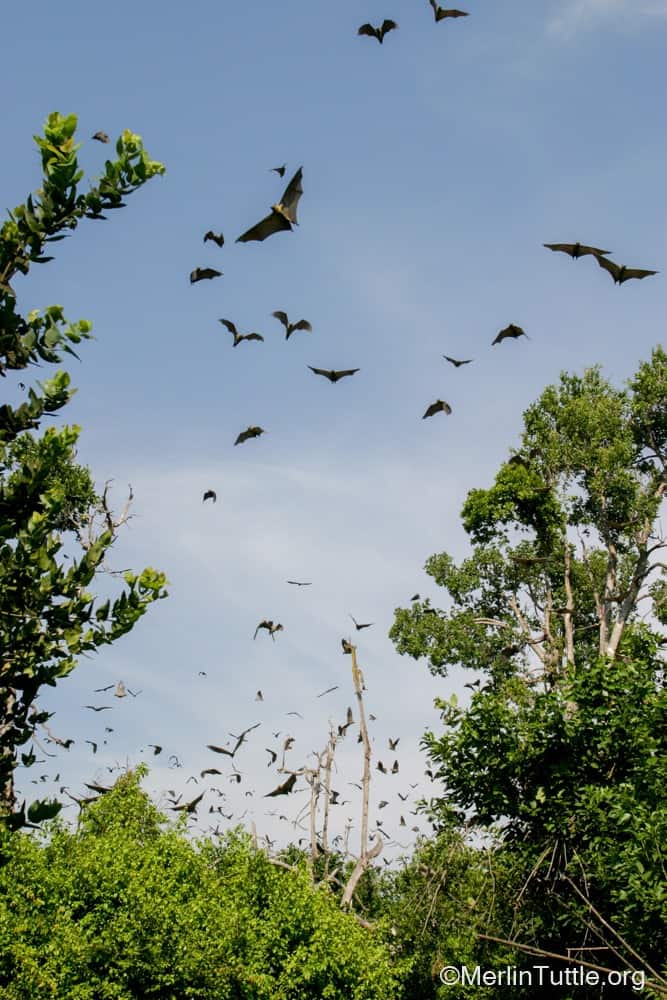Challenging torrential rains countered by cooperative bats in Costa Rica
Merlin and MTBC team members spent 19 days in Costa Rica last November on a filming trip for “Bat City” with its Director and Emmy
Early evidence pointed to great apes1 and humans2 as possible sources of Ebola, but they were assumed to be too susceptible to serve as reservoirs. Bats were widely speculated to be the source, though the preponderance of evidence pointed elsewhere3.
By the time of the current outbreak in Guinea, it had long been assumed that bats were to blame for Ebola transmission to humans. Nevertheless, it has now been traced to a symptomless human carrier4.
This raises the possibility that other outbreaks, assumed to have come from bats, instead came from humans or other primates5.
Regrettably, bats have not been aided by public education campaigns now recommended to prevent human stigmatization4. For nearly a decade, bats have been blamed in news articles worldwide as exceptionally dangerous sources of scary diseases, based largely on premature Ebola speculation. The harm done will be long-lasting and difficult to counter, but we may now have an opportunity to begin restoring the tarnished reputation of bats.

References
Love our content? Support us by sharing it!
Merlin and MTBC team members spent 19 days in Costa Rica last November on a filming trip for “Bat City” with its Director and Emmy
“Just like the old days, eh Heather?” Kent softly clicks his tally counter as he sits in his folding chair on the other side of
Bats can use sounds in many complex ways. They can sing and even have different dialects… When imagining a bat, the first thoughts that come
It was a long road to Austin, Texas. More than five years after my first introduction to Merlin Tuttle’s Bat Conservation as a teenager, I packed
2024 © Merlin Tuttle’s Bat Conservation. All rights reserved.
Madelline Mathis has a degree in environmental studies from Rollins College and a passion for wildlife conservation. She is an outstanding nature photographer who has worked extensively with Merlin and other MTBC staff studying and photographing bats in Mozambique, Cuba, Costa Rica, and Texas. Following college graduation, she was employed as an environmental specialist for the Florida Department of Environmental Protection. She subsequently founded the Florida chapter of the International DarkSky Association and currently serves on the board of DarkSky Texas. She also serves on the board of Houston Wilderness and was appointed to the Austin Water Resource Community Planning Task Force.
Michael Lazari Karapetian has over twenty years of investment management experience. He has a degree in business management, is a certified NBA agent, and gained early experience as a money manager for the Bank of America where he established model portfolios for high-net-worth clients. In 2003 he founded Lazari Capital Management, Inc. and Lazari Asset Management, Inc. He is President and CIO of both and manages over a half a billion in assets. In his personal time he champions philanthropic causes. He serves on the board of Moravian College and has a strong affinity for wildlife, both funding and volunteering on behalf of endangered species.